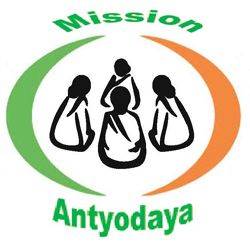Mission Antyodaya, a convergence and accountability framework adopted in the Union Budget 2017–18, aims to bring the best use and management of resources allotted by 27 Ministries/Departments of the Government of India under various programs for the development of rural areas. It is intended to be a state-led initiative, with Gram Panchayats serving as the hub of coordination. An essential component of the Mission Antyodaya framework is the annual survey conducted in Gram Panchayats all across the nation. It is conducted concurrently with the Ministry of Panchayat Raj's People's Plan Campaign (PPC), and its goal is to support the participatory planning process for the Gram Panchayat Development Plan.
The aim of the Antyodaya program is -
Asked
3 years ago
Updated
3 years ago
Viewed
719 times
The aim of the Antyodaya program is -
2 Answers
The scheme's major goal is to provide food production and to build a hunger-free India. The plan provides the underprivileged of the poor in India with basic foodstuffs as well as other essential items for their everyday necessities.
Antyodaya Anna Yojana is a government-sponsored initiative that provides meals to millions of
India's underprivileged households. N Sri Vishnu, the then-Union Food and Civil Supplies Minister,
devised this idea. It was originally adopted in the Indian state of Rajasthan by the NDA
administration on December 25, 2000.

Following the identification of the 'poorest people' by research, the administration began offering them the option to buy up to
35 kilograms of wheat and rice at a heavily subsidized rate of
3 per kilogram of rice as well as 2 per kilogram of wheat. Studies were used by their
individual state rural development agencies to identify poorer people. The plan was enlarged twice, once in June 2003 and again in August 2004, each time getting 5,000,000 BPL households and increasing the overall number of households served up to 20,000,000. In 2003, an extra 50 lakh households were recruited.